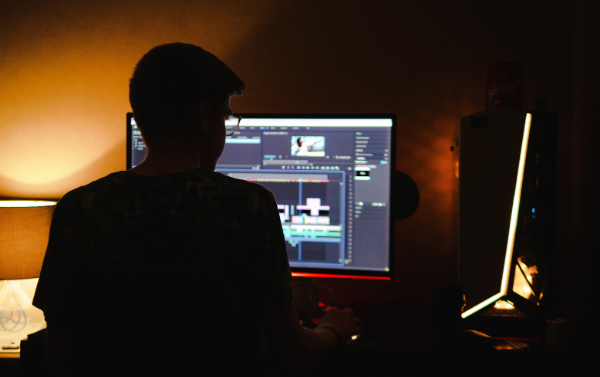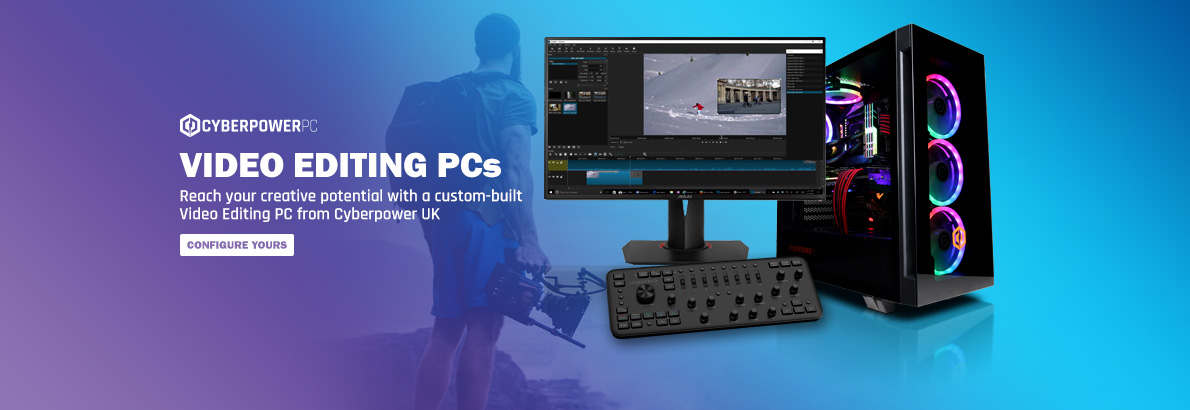If you’re looking to edit a video, then you’ll need a computer that’s up to the task. While it’s now possible to stitch together a video using solutions like YouTube’s browser-based system, if you want proper, professional-looking results, then there’s no substitute for dedicated software and the horsepower required to get the best from it. So, Can a Gaming PC double as an Editing PC?
If you’re already the proud owner of a Gaming PC, you might be tempted to simply use what you’ve got. A gaming PC is designed to display moving images, and so too is a video-editing workstation. What’s good for one, you might suppose, will be good for the other.
Unfortunately, that’s not quite the case. When editing video, you’re not generating images in real-time; instead, you’re storing thousands of them and playing them in a certain order. If you want an analogy, it’s a little bit like comparing someone who designs playing cards for a living and someone who shuffles and deals with them.
CPU, CPU, CPU
The CPU is the main determiner of performance in a video-editing PC. The more powerful it is, and the more cores it has, the better – or so you might expect. Again, it depends on the programs you’re running.
In Premiere Pro, a three-grand Threadripper won’t perform all that much better than a Ryzen 9 that’s just a fifth of the price. Adobe recommends eight cores as the sweet spot for After Effects and Premiere Pro. “Depending on the task, Premiere Pro runs at 93-98% efficiency with 8 cores,” the company claims. Consequently, it’s worth going faster once you reach this point.
If you’re working with H.264 or H.265 (HEVC) footage from your phone or camera, then it’s well worth considering an Intel chip that offers Quick Sync hardware acceleration. This is a special core on the CPU that’s dedicated to video encoding. It’s supported by a range of video editing programs, and it might allow a weaker CPU to hold its own against what should, on paper, be a more powerful one.
GPU
Most video-editing software doesn’t expect much from the GPU. You’ll therefore be able to get away with a weaker GPU, which will allow you to put more emphasis on the CPU. The major exception here is DaVinci Resolve, which does most of its work through the GPU. If you’re doing your editing via DaVinci Resolve, then a powerful GPU is a must. This piece of software leans into more generalised post-production territory and offers a range of colour-correction and node-based visual effects tools that are only possible through the GPU.
If you’re just planning on stitching video files together, you might think you can get away without a GPU. In practice, however, you’re likely to find that a modest GPU will find itself getting a lot of use, especially during encoding and rendering.
The type of graphics card you opt for will depend on the software you’re using. Unlike games, different video-editing programs will be optimised better for different GPU architectures. If you already have a strong preference for software, it might be best to check out who the developer recommends.
Storage
Video files are notorious for being absolutely humungous. A single uncompressed frame at 4K will weigh in at just over thirty megabytes. That means a second of footage can weigh in at around seven hundred megabytes, and an hour can be more than a terabyte. Things can get a little bit complicated when you’re worrying about chroma factor and metadata, but the bottom line is that you need a lot of space, particularly if you’re stitching together footage from multiple camera angles.
As well as having masses of storage space, we also need to be able to get that information into the video editor in a reasonable time. The time you spend getting video data from your storage drives is time you might otherwise spend a little more productively. Therefore, it’s best to go for a fast solid-state drive, with NVMe being the gold standard.
Given the price difference between the technologies, it’s common to see a combination of NVMe and SATA-based SSDs being used in editing contexts. If you’ve got an enormous amount of footage that you’d like to be archived, you can either keep a separate NAS server. You can pick these up at reasonable prices second-hand. Another option is to pay a subscription and keep your backups offsite – which will protect you against data loss in the event of a fire. Just don’t expect to be able to work directly from a mechanical drive.
Memory
Recently, we talked about just how much system memory you need when you’re working with lots of uncompressed audio. And the same applies to video – with the slight caveat that you won’t usually be working with as many layers as you would with music production. A gaming system can usually get by with just sixteen gigabytes, but a video-editing one will need considerably more. It’s not unheard of for a dedicated workstation to go all the way up to 128GB in a configuration of four sticks of thirty-two. This won’t be cheap – but it might improve your workflow to such an extent that the investment is justified in saved time.
What if I want to do both?
You might be tempted to get two separate machines – one gaming system and one editing PC. This is not an unreasonable way of doing things, as it’ll help you to keep a strict partition between your leisure and productive time. However, you’ll end up paying more for components. Do you really need two cases, two power supplies, and two motherboards? And are you really going to be using two machines at the same time?
For those who want to leave projects to render and get on with a round or two of Age of Empires in the meantime, the route of using two separate machines might be a sensible one. For those with a limited budget, it’s better to spend big on a single machine with power processors like an Intel i9, Ryzen 9 that can do everything. Whatever your needs, obviously, you’ll find something that can meet them right here from Cyberpower’s Editing PCs!

